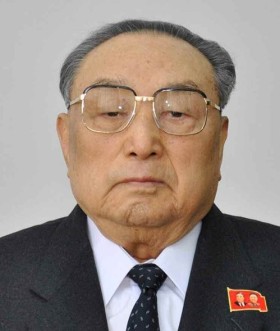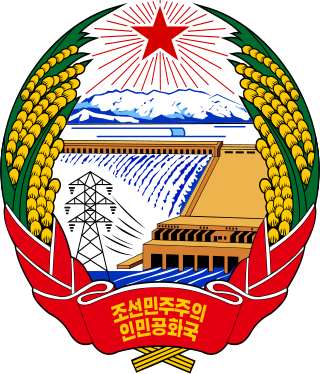| |||||
| Centuries: | |||||
|---|---|---|---|---|---|
| Decades: | |||||
| See also: | Other events in 1966 Years in North Korea Timeline of Korean history 1966 in South Korea | ||||
Events from the year 1966 in North Korea .
| |||||
| Centuries: | |||||
|---|---|---|---|---|---|
| Decades: | |||||
| See also: | Other events in 1966 Years in North Korea Timeline of Korean history 1966 in South Korea | ||||
Events from the year 1966 in North Korea .

Kim Il Sung was a North Korean politician, revolutionary, and military leader. He founded the Democratic People's Republic of Korea, commonly known as North Korea, which he led as Supreme Leader from its establishment in 1948 until his death in 1994. Afterwards, he was succeeded by his son Kim Jong Il and was declared Eternal President.

Kim Yong-ju was a North Korean politician and the younger brother of Kim Il Sung, who ruled North Korea from 1948 to 1994. Under his brother's rule, Kim Yong-ju held key posts including Politburo member in the Workers' Party of Korea (WPK) during the 1960s and early 1970s, but he fell out of favour in 1974 following a power struggle with Kim Jong Il. From 1998 until his death in 2021, he held the ceremonial position of Honorary Vice President of the Presidium of the Supreme People's Assembly (SPA), North Korea's parliament.

The Secretariat of the Workers' Party of Korea, formerly known as the Executive Policy Bureau (2016–21), manages the work of the Politburo of the Workers' Party of Korea and its Presidium. The General Secretary leads the work of the Secretariat, and the body is composed of several members.

The 6th Congress of the Workers' Party of Korea (WPK) was held in the February 8 House of Culture in Pyongyang, North Korea, from 10 to 14 October 1980. The congress is the highest organ of the party, and is stipulated to be held every four years. 3,062 delegates represented the party's membership; 117 foreign delegates attended the congress, without the right to speak. The congress saw the reappointment of Kim Il Sung as WPK General Secretary and the Presidium of the Politburo established as the highest organ of the party between congresses.

The Kim family, officially the Mount Paektu bloodline (Korean: 백두혈통), named for Paektu Mountain, in the ideological discourse of the Workers' Party of Korea (WPK), and often referred to as the Kim dynasty after the Cold War's end, is a three-generation lineage of North Korean leadership, descending from the country's founder and first leader, Kim Il Sung. Kim Il Sung came to rule the north in 1948, after the end of Japanese rule split the region in 1945. Following his death in 1994, Kim Il Sung's role as supreme leader was later passed on to his son, Kim Jong Il, and his grandson, Kim Jong Un. All three leaders in different generations have served as leaders of the WPK and served as North Korea's supreme leaders since the state's establishment in 1948.
Events from the year 1980 in North Korea.
Events from the year 1978 in North Korea.

Events from the year 1977 in North Korea.
Events from the year 1976 in North Korea.
Events from the year 1973 in North Korea.
Events from the year 1972 in North Korea.
Events from the year 1971 in North Korea.
Events from the year 1964 in North Korea.
Events from the year 1963 in North Korea.
Events from the year 1962 in North Korea.
Events from the year 1957 in North Korea.
Events from the year 1955 in North Korea.
Events from the year 1953 in North Korea.
Events from the year 1966 in South Korea.
Hong Il-chon was the first wife of Kim Jong Il. She was the daughter of a soldier who died during the Korean War. In the early 1960s, Kim Il Sung, father of Kim Jong Il, introduced her to his son and handpicked her to marry him in 1966. Her only daughter is named Kim Hye-gyong, born in 1968, and is the first child of Kim Jong Il. They divorced in 1969.